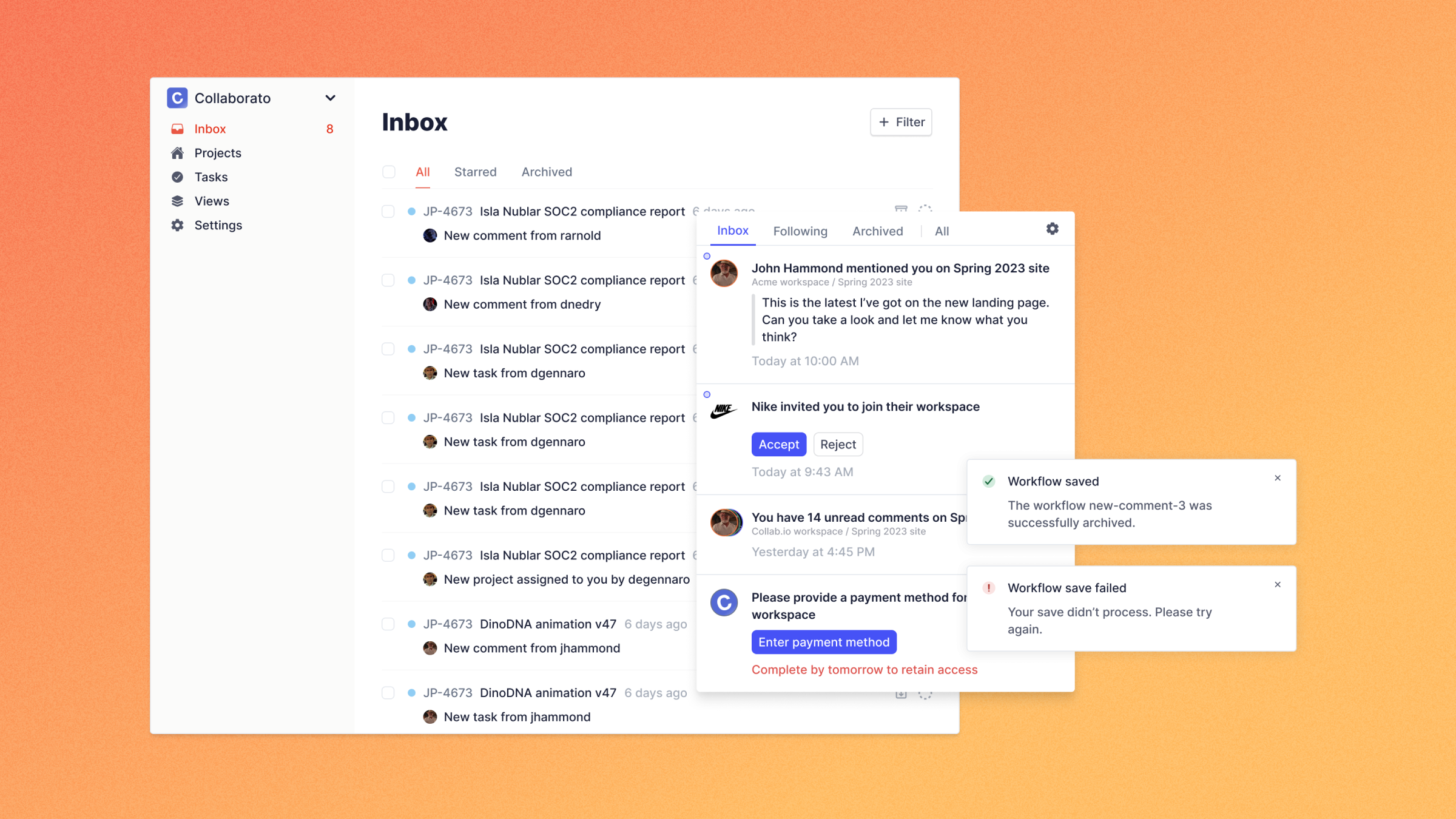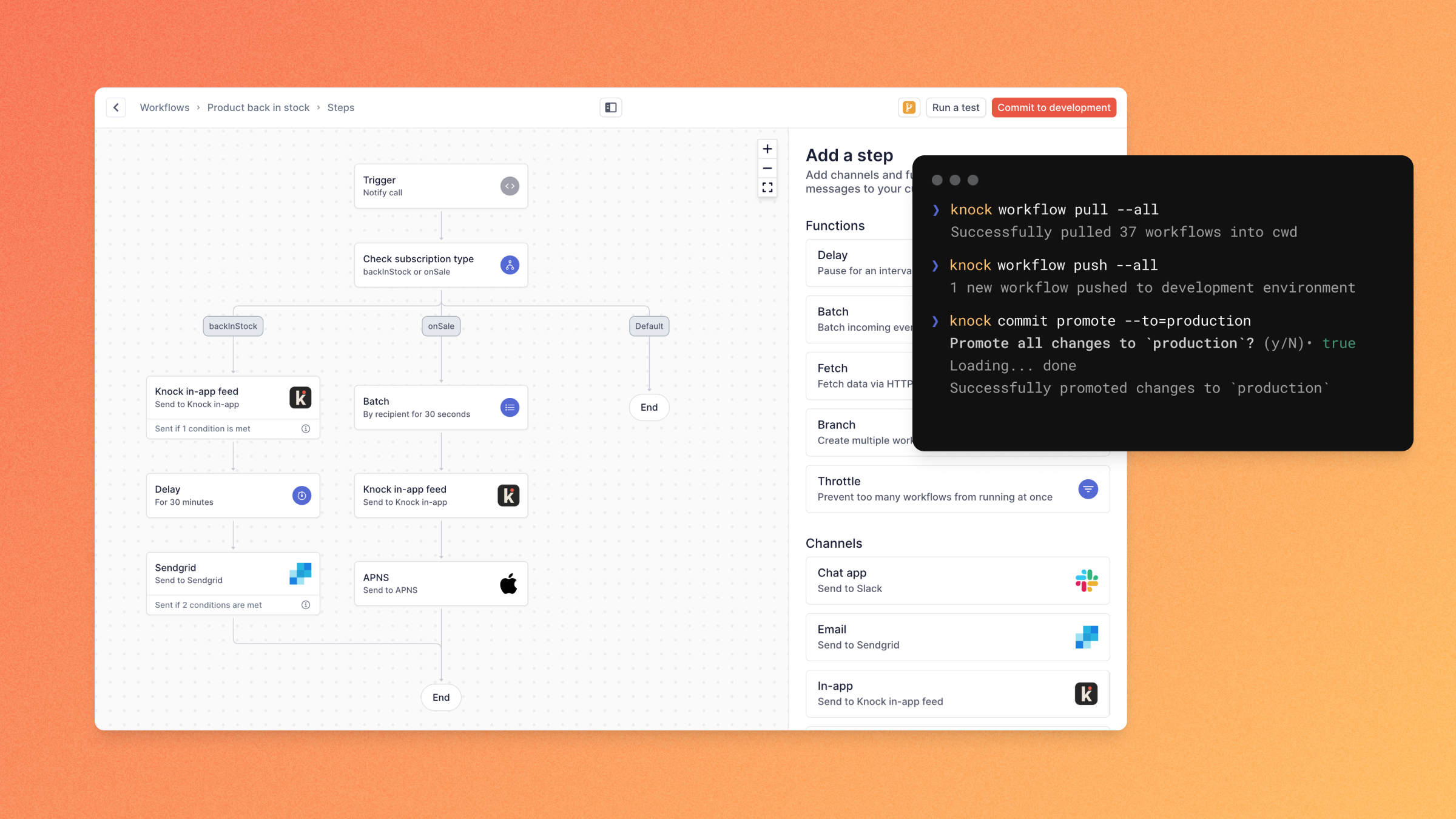ARTICLE AD
Notifications may seem like a solved problem. You’re probably getting more than you want already, after all. The two founders of Knock, Sam Seely and Chris Bell, argue that while a lot of companies have solved the “last-mile delivery problem,” there is more work to be done. While products like Twilio and SendGrid may offer developer-friendly APIs, the Knock founders believe that what is really needed is a more comprehensive solution that combines notification delivery with a comprehensive workflow engine and integrated observability tools.
The company, which launched in 2021, today announced a $12 million funding round led by Craft Ventures. At launch, the company also raised a previously undisclosed $6 million seed round led by Afore Capital. Preface Ventures, Worklife, Expa Ventures, Cofound Partners, and Tokyo Black, also invested in these rounds, as well as angel investors like Vercel co-founder and CEO Guillermo Rauch and Behance co-founder Scott Belsky.
“Today, if you’re an engineering team for any type of product — whether it’s SaaS or developer tools, or consumer products — there are generic services that used to be built in-house and now you can go to an API for,” Knock CEO Sam Seely said. “Now, all the best engineers who want to work on payments, they go work at Stripe; and all the best ones that want to work on search, go to Algolia. It felt like the notification infrastructure part of this was still just the thing that you had to build in-house.”
Seely and Bell told me that they went back to the drawing board to see what a modern notification system would look like and what the primitives would be that they needed to build. At the end of the day, notifications aren’t a differentiator for most products, but they are very much a necessity. So if a product like Knock can speed up the development workflow, that’s a win-win.
The real differentiator for Knock is that it doesn’t just provide the tooling to send notifications but also pulls in data from third-party tools that can then trigger the workflow logic a developer has specified for their specific use case (like translating a message for a global audience, for example).
“We have an entire workflow engine — that’s really the core of the product,” Seely explained. “That’s where you’re defining when some trigger happens. We call the Knock API, run through this workflow, batch messages on this cadence, throttle them so users don’t get spammed, and then send this in-app message, send this email message.”
This workflow engine is accessible through a web-based user interface, but as the team stressed, all of this functionality is also available programmatically. “A big kind of focus for us is taking that workflow engine that drives cross-channel engagement, but then bringing it into the everyday developer workflow,” said Seely.
Over time, Knock plans to go deeper into the customer engagement space, too. The team argues that every time a new channel emerges, existing players in this space like SAP’s Exact Target, for example, have a hard time catching up.
“Users are getting tired of the onslaught and wave of emails and push notifications,” Seely said. “It’s real native product experiences that drive value to users and help companies drive engagement and retention — and all the reasons you send notifications in the first place. To drive native in-app experiences, that’s where developer experience matters.” And that’s where Knock thinks it can have a major advantage over the incumbents in this market. Seely noted that while the company often sees competitors like Iterable and Customer.io that are often sold to marketers, the secret of that market is that these tools are often mostly used and maintained by engineers.
One interesting aspect of the Knock tech stack: it’s written in the Elixir language, which isn’t exactly mainstream. As it turns out, Bell has long been very active in this community and even runs an Elixir podcast. “When I think about fit, in terms of what we’re building and the language choice, there has been no better application in my mind for the use of Elixir,” he explained. “Where it shines is this highly concurrent fault-tolerantness that it brings to the table. When I think about what we’re doing here, the foundation of Erlang is written for telephony systems, routing calls from one place to another.”
The company plans to deploy the new funding to expand its go-to-market efforts and, of course, grow its engineering team as well. Current customers include the likes of Vercel, Amplitude, Hiive and Betterworks.

 1 year ago
179
1 year ago
179 



